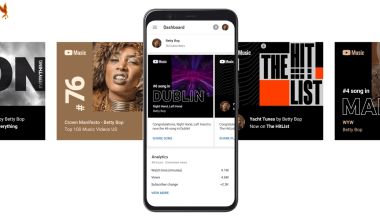Selling merchandise on Spotify is a great way for artists to connect with fans and generate additional revenue. This blog post will guide you through the steps to successfully sell merch on Spotify, ensuring you maximize your reach and profits.
Table of Contents
- Introduction
- Why Sell Merch on Spotify?
- Setting Up Your Spotify for Artists Account
- Creating and Listing Your Merch
- Optimizing Your Merch Listings
- Promoting Your Merch on Spotify
- Best Practices for Selling Merchandise on Spotify
- Maximizing Sales Through Integration and Analytics
- Case Studies of Successful Spotify Merch Sellers
- Conclusion
Introduction
Spotify is not just a platform for streaming music; it’s also a powerful tool for artists to sell merch on Spotify. By integrating your merch store with Spotify, you can directly reach your fans while they enjoy your music. This Spotify Merchandising Guide will walk you through the process of setting up, managing, and promoting your merch on Spotify.
Why Sell Merch on Spotify?
Selling merchandise on Spotify has several benefits:
- Direct Access to Fans: Your fans already listen to your music on Spotify, making it easier to convert them into customers.
- Increased Revenue: Merchandise sales provide an additional revenue stream.
- Brand Building: Merch helps in building your brand and creating a deeper connection with your fans.
When you sell merch on Spotify, you leverage the platform’s massive user base, enhancing your visibility and reaching potential customers who might not follow you on other social media platforms. Additionally, integrating your merchandise with your music presence creates a seamless experience for fans, encouraging them to support you by purchasing your products.
Setting Up Your Spotify for Artists Account
Before you can start selling merchandise on Spotify, you need to set up a Spotify for Artists account. This account gives you control over your artist profile and allows you to add merch.
Steps to Set Up Spotify for Artists
- Sign Up: Go to the Spotify for Artists website and sign up.
- Claim Your Profile: Follow the instructions to claim your artist profile.
- Verify Your Account: Verify your account to gain access to all features.
Having a verified Spotify for Artists account is crucial for selling merchandise on Spotify. Verification provides credibility and unlocks various tools and features, including the ability to link your merch store.
Creating and Listing Your Merch
Once your Spotify for Artists account is set up, you can start creating and listing your merchandise.
Designing Your Merch
- Identify Popular Items: T-shirts, hoodies, and hats are common merchandise items.
- Create Unique Designs: Your merch should reflect your brand and resonate with your fans.
- Use Quality Materials: Ensure your merchandise is of high quality to keep your fans happy.
Listing Your Merch on Spotify
- Integrate with Merchbar: Spotify partners with Merchbar to list merch. You need a Merchbar account to get started.
- Upload Your Designs: Add your merchandise designs to Merchbar.
- Sync with Spotify: Once your Merchbar store is set up, it will automatically sync with your Spotify artist profile.
This process ensures that your merchandise is visible to your fans on Spotify. The ease of access allows fans to purchase your products while enjoying your music, increasing the likelihood of impulse buys.
Optimizing Your Merch Listings
Optimizing your merch listings is crucial to attract more buyers. Here are some tips:
- Use High-Quality Images: Ensure your merch images are clear and attractive.
- Write Compelling Descriptions: Highlight the unique features and benefits of your merchandise.
- Set Competitive Prices: Research the market to set prices that are competitive yet profitable.
- Include Multiple Options: Offer different sizes and colors to cater to all fans.
Optimized listings can significantly boost your sales. When fans see high-quality images and read engaging descriptions, they are more likely to make a purchase. Use descriptive words that evoke a sense of urgency and exclusivity, encouraging fans to buy before items run out.
Promoting Your Merch on Spotify
Promotion is key to selling merchandise on Spotify. Here are some strategies:
- Leverage Social Media: Share your merch on social media platforms.
- Collaborate with Influencers: Partner with influencers to promote your merchandise.
- Use Spotify Playlists: Include mentions of your merch in your Spotify playlists.
- Offer Discounts: Provide special discounts to your Spotify listeners.
These promotion techniques can help in increasing your merch visibility and sales. Social media is particularly powerful for spreading the word about your merchandise. Utilize platforms like Instagram, Twitter, and Facebook to showcase your products and share links to your Spotify merch store.
Best Practices for Selling Merchandise on Spotify
Following best practices ensures a smooth and successful merchandising experience on Spotify.
- Stay Updated with Trends: Keep an eye on the latest trends in merchandise.
- Engage with Your Fans: Regularly interact with your fans and gather feedback.
- Monitor Your Sales: Use analytics to track your sales and understand what works best.
- Update Your Merch Regularly: Introduce new items and designs periodically to keep your store fresh.
Adhering to these best practices will help you maintain a successful merchandise store on Spotify. Engaging with your fans helps build a loyal customer base, and keeping your merch offerings updated keeps fans coming back for more.
Maximizing Sales Through Integration and Analytics
To further enhance your ability to sell merch on Spotify, it’s essential to integrate your merchandise sales efforts with comprehensive analytics. This approach allows you to understand your audience better and tailor your strategies for maximum impact.
Integration with Other Platforms
- Social Media Integration: Link your Spotify merch store with your social media accounts to create a cohesive marketing strategy.
- Email Marketing: Collect email addresses from your fans and send newsletters featuring your latest merch.
- Website Integration: If you have an official website, ensure that there is a direct link to your Spotify merch store.
By integrating your Spotify merch store with other platforms, you can create multiple touchpoints for fans to discover and purchase your products.
Utilizing Analytics
- Track Your Sales: Use Spotify for Artists and Merchbar analytics to monitor your sales performance.
- Understand Fan Behavior: Analyze data to see which products are most popular and during what times sales peak.
- Adjust Strategies: Use the insights gained from analytics to tweak your marketing and product offerings.
Analytics provide valuable insights that can help you optimize your merchandising strategy on Spotify. By understanding what works and what doesn’t, you can make informed decisions to boost your sales.
Case Studies of Successful Spotify Merch Sellers
Learning from successful artists who have effectively sold merchandise on Spotify can provide inspiration and practical tips. Here are a few examples:
Case Study 1: Independent Artist Boosts Revenue with Exclusive Merch Drops
An independent artist used exclusive merchandise drops to create buzz and urgency among fans. By promoting these drops on social media and through email newsletters, the artist saw a significant increase in sales. The use of high-quality images and compelling product descriptions further enhanced the appeal of the merch.
Case Study 2: Band Increases Fan Engagement with Personalized Merch
A band offered personalized merchandise, such as custom t-shirts with fan names or messages. This personalization created a deeper connection with fans and encouraged more purchases. The band also engaged with fans on social media, sharing photos of fans wearing the merch, which generated more interest and sales.
Case Study 3: Major Artist Maximizes Sales with Strategic Discounts
A major artist leveraged strategic discounts to boost merch sales. By offering limited-time discounts and bundling merch with album sales, the artist created a sense of urgency and value. This approach not only increased sales but also helped in moving older inventory.
These case studies demonstrate the importance of creativity, engagement, and strategic planning in successfully selling merchandise on Spotify.
Conclusion
Selling merchandise on Spotify is an excellent opportunity for artists to increase their revenue and strengthen their brand. By following this Spotify Merch Selling Tips, you can effectively set up and manage your merch store on Spotify, ensuring a seamless experience for both you and your fans.
For further reading, explore these related articles:
For additional resources on music marketing and distribution, visit Deliver My Tune.






